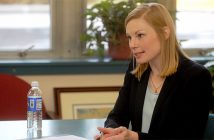
This week, the Arizona Senate voted to allow over 1 million of the state’s students to have access to Empowerment Scholarship Accounts. The Arizona Daily Star’s Howard Fischer described the group action as allowing each “of the more than 1 million students in Arizona the opportunity to attend private and parochial schools with tax dollars.”
The vote, which was 17-13, is the beginning of the removal of the constraints that now are in place for ESA, such as the current limitation of no more than 5,500 students being enrolled in the program.
As of now, Arizona law allows Empowerment Scholarship Accounts only to special needs students, students living on reservations, and children in schools that have D or F ratings.
If the law passes, all restrictions on ESAs will be removed by the 2018 academic year. The number of students permitted to have ESAs, which now stands at 0.5% of all learners in public schools, will change to 100% in 2020.
The only condition that will remain in place is that young people must attend a public school before applying for an ESA. Currently, a student must attend a public school for over 100 days and cannot be in kindergarten.
The lead author of SB 1279, Sen. Debbie Lesko (R-Peoria), said the vote was a massive step forward for school choice in the state. Sen. Steve Farley (D-Tucson) disagreed and called it “the end of public education in Arizona.” He added that the timing was all wrong.
Farley was referring to the May 17 special election for Proposition 123, which will ask voters to send money from an existing trust account to cover the failure of lawmakers to comply with a law, approved by voters, to increase the state funding for public schools each year to counteract inflation.
“If we think we’re going to get voters to vote on (Proposition) 123 at the same time as we’re gutting our public school system with bills like this that would devastate the public school system, I don’t know how we think we’re going to make that sale,” Farley said.
Lesko noted that the ESA program paid less than traditional schools receive from government support. She said that the ESA program will save taxpayer money, reports Bob Christie for the Arizona Daily Sun.
The Arizona House is contemplating legislation just like the Senate, which means the bill may be traveling to Gov. Doug Ducey’s desk rather quickly.
KJZZ Public Radio’s Stina Sieg quoted Andrew Morrill, president of the Arizona Education Association:
“The deeper waters are, to move public, tax-payer money into corporate and private structures. There’s profit to be made in these schools, and you can’t trace these public dollars once they’re gone from the public eye.
He added that Empowerment Savings Accounts are expensive, and there is no reliable scientific way to measure whether students are helped because the private schools do not take part in state assessments.
In an op-ed piece for The Arizona Republic, Laurie Roberts writes that the Republican-led legislature has looked for ways to divert money to private schools in the state by calling it parental choice. Roberts says the Arizona Supreme Court found that the state’s ESA program was unconstitutional because of the use of public funds to support religious or private schools.
At that time, the Empowerment Scholarship Account came into being and began to deposit money onto a debit card and handing it to parents to use as they saw fit, as long as it was used to pay for their children’s therapy or education in elementary school, high school, or after graduation.
In 2011, ESAs allowed children with extreme disabilities to attend independent schools by way of public funding. The program was applauded for giving a small group of children the education they could not get in public schools.
The plan then grew and enrolled the children of active-duty military families and foster care young people. After that, kindergartners and students in schools with a D or F rating were added. ESAs were then allowed for Native American students who live on reservations.
Now, says Roberts, the “have-nots”, or families who are too poor to send their children to another neighborhood, or who are preoccupied and unable to be concerned about where their kids will be educated, will be more or less abandoned.
But Arizona’s per-student funding, according to an Arizona auditor general’s report, was $412 less in 2014 than it was in 2009. The per-student spending in the state is already is about 42% lower than the national average.




